There are six main ways of performing qualitative data analysis.
This include:
- Qualitative content analysis
- Narrative analysis
- Discourse analysis
- Thematic analysis
- Grounded theory
- Interpretive phenomenological analysis
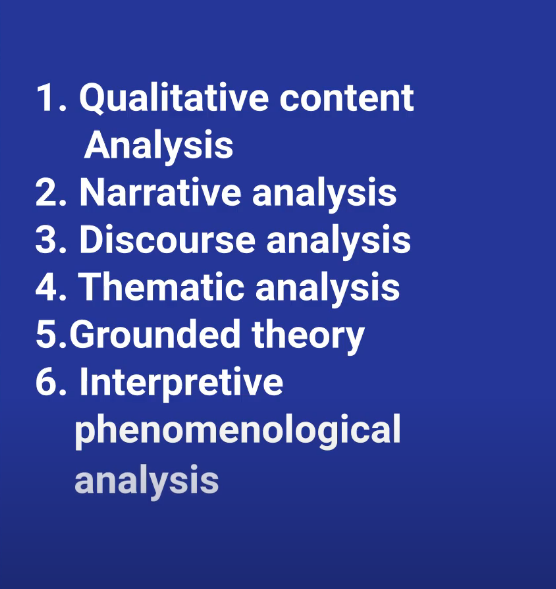
My name is Bernard Mugo. I like to refer to myself simply as an academic

In the past three years, I’ve helped more than 200 PhD students analyze qualitative data and finally complete their thesis or dissertations.
In the course of helping such a large number of students, I’ve gained invaluable experience in the best practices you can use to perform qualitative analysis of your interviews and be able to retrieve quality findings.
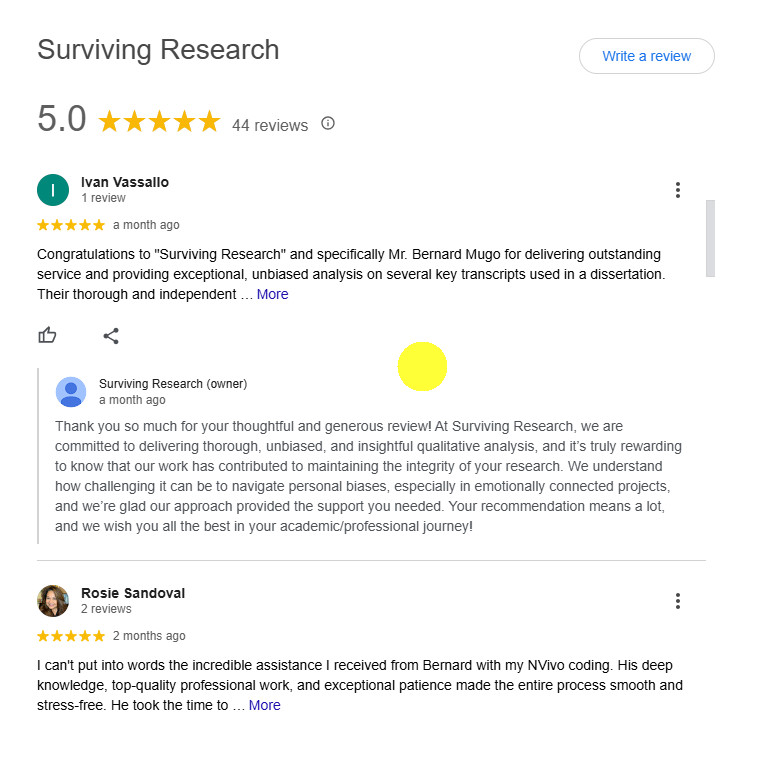
In this article we are going to look at each of these methods.
By the end of this article you will be able to decide which the best method for your research is.
I’m also going to give you links to examples of thesis and dissertations that are conducted to the use of each of the qualitative data analysis methods so that you can clearly understand the differences between the six methods.
Make sure you stay tuned until the end of the article because I’m also going to advise you on which method you should utilize for your qualitative data analysis as a beginner.
Qualitative content analysis
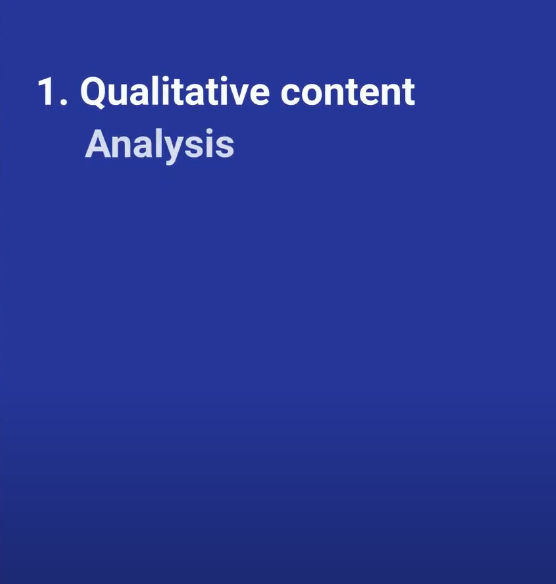
Now let’s look at the first type of qualitative data analysis which is qualitative content analysis.
What does qualitative content analysis involve?
Definition of Qualitative content analysis
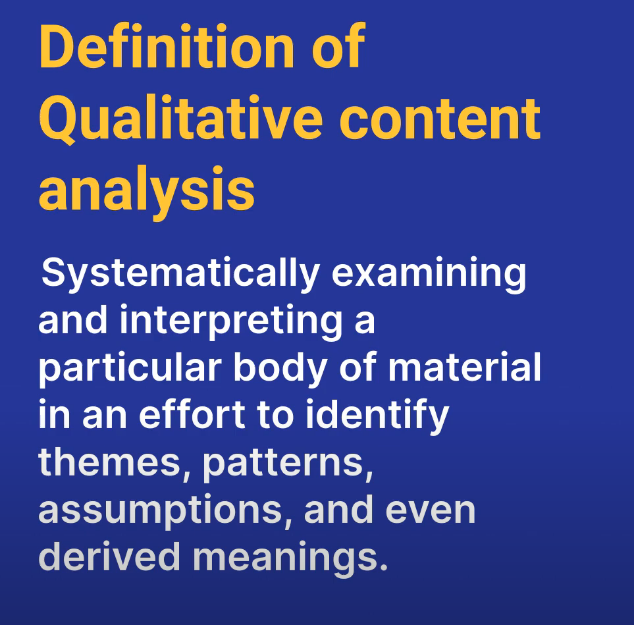
Qualitative content analysis can be defined as systematically examining and interpreting particular body of material in an effort to identify views, patterns, assumptions and even derived meanings.
Now what is considered content in content analysis?
The content that we need to analyze in content analysis is any material that is used by people for different purposes.
In content analysis, the material can sometimes not be originally intended for research.
For example, a person can decide to analyze news articles covering the concept of gender for the past 20 years through content analysis.
Content analysis is therefore performed on diverse forms of human communications such as:
- Photographs.
- Printed documents
- Video or film
- Audio tapes
- Street signs
- Social media content
Another instance where we can use content analysis is to evaluate whether the language used in a certain set of advertisements shows biases towards gender roles.
Now one of the most prominent approaches to qualitative content analysis is summative content analysis.
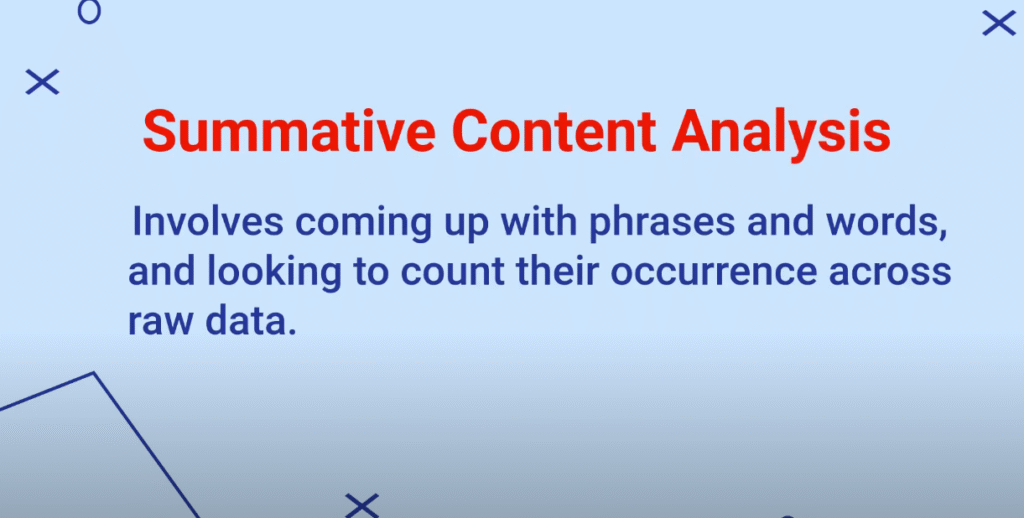
Summative content analysis involves coming up with phrases and words and looking to count their occurrence across raw data.
In some instances, the researcher might also decide to count the latent meanings of words or themes that appear in data.
For example, a researcher can decide to count the instances of both positive and negative exchanges that certain individuals experience in the workplace.
In order to determine whether such a workplace can be described as being generally positive.
When using content analysis as a way of analyzing qualitative data, the researcher needs to make a decision on the units of analysis that will be counted.
An example of units of analysis that are counted in content analysis includes:
- Words
- Themes
- Characters
- Paragraphs
- Items
- Concepts
- Semantics.
The link below is a study utilizing qualitative content analysis
https://drive.google.com/file/d/1ehmxzJhkHuRj8Q99GIYKkAAQVSwQK-IK/view?usp=drive_link
Narrative analysis
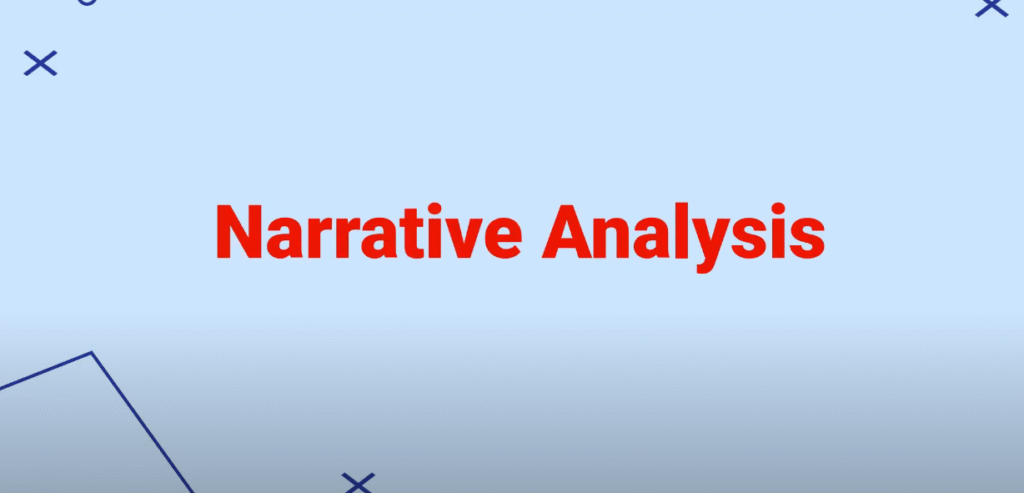
What does narrative analysis involve?
Narrative analysis is a qualitative research approach that focuses on the stories that people tell and how people will communicate such stories.
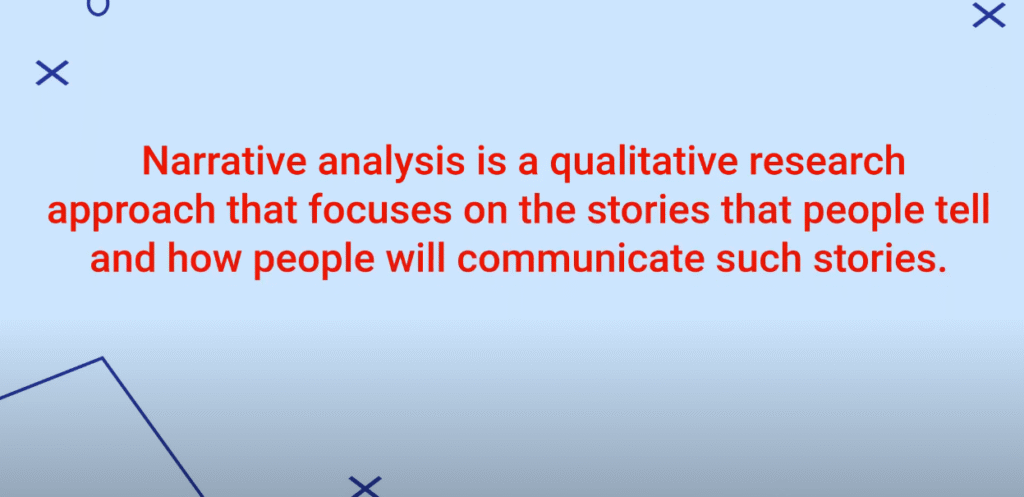
Narrative analysis is therefore ideal to study human experiences through the stories that people will share.
Characteristics of narrative analysis
So what are the defining characteristics of narrative analysis?
The defining characteristics of narrative analysis include:
1. A focus on stories
Narrative analysis uses stories as:
- Data Whether they come from interviews
- Field notes
- Oral tales
- Blogs
- Letters
- Autobiographies
The text of the story forms the dataset.
2. An emphasis on how stories are told
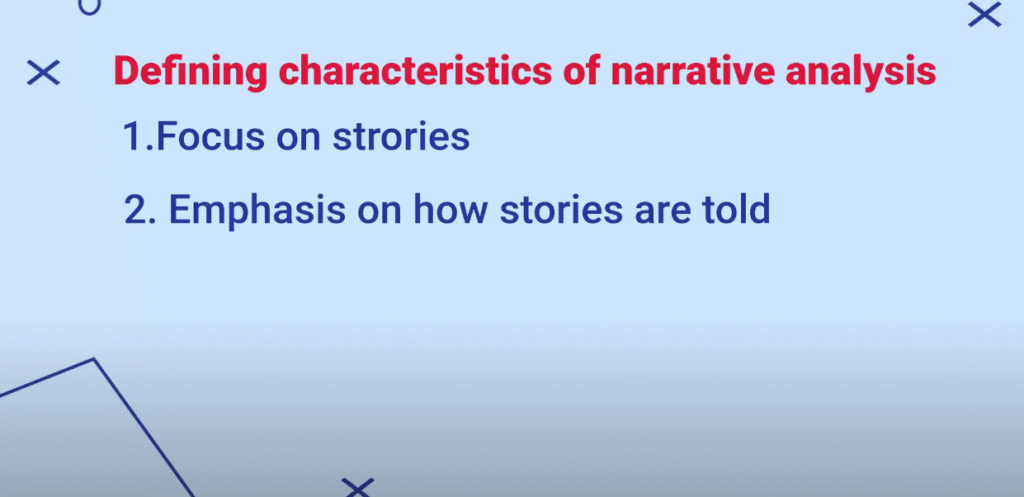
Narrative analysis looks at the language used.
How the story is constructed.
The linguistic tools.
The cultural context.
The way a story is told is therefore important as the content is told in narrative analysis.
3. The preservation of the narrative
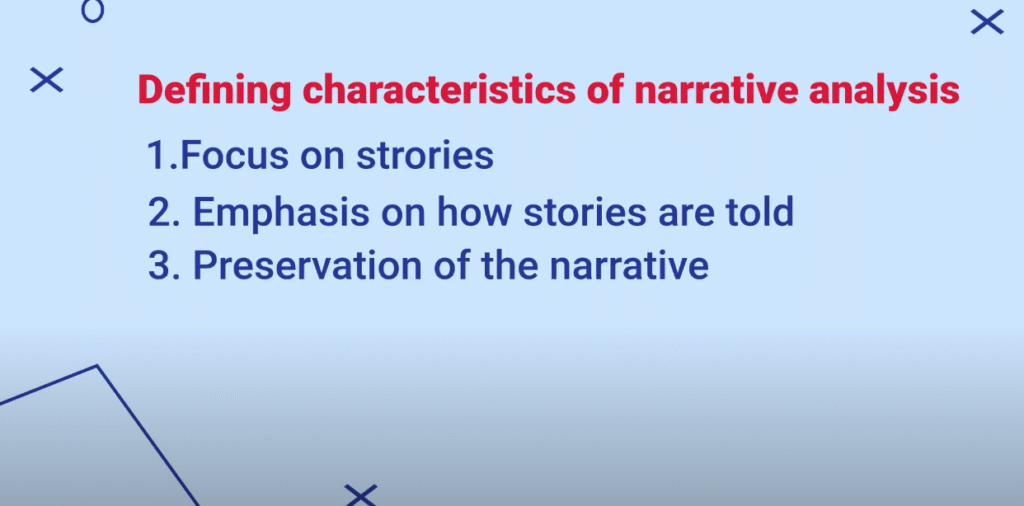
Unlike some other qualitative approaches narrative analysis preserves data in its original narrative form.
Data is analyzed as a whole unit or narrative sequence that means that we do not seek to segment the data
For example through coding in narrative analysis.
4. It uses diverse approaches
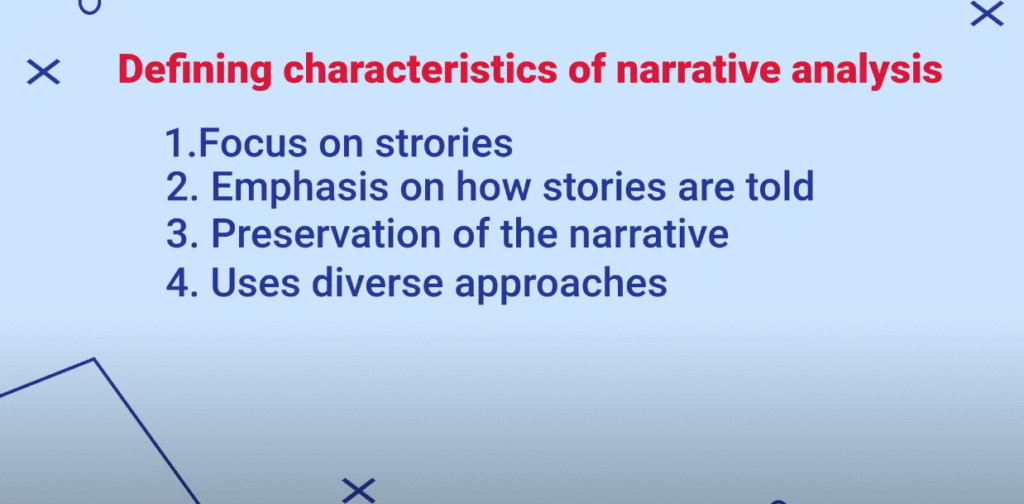
There are various analytical approaches within narrative analysis including:
- Sociological
- Psychological
- Linguistic
- Literally perspectives.
These approaches can be combined depending on the research question.
5. Context
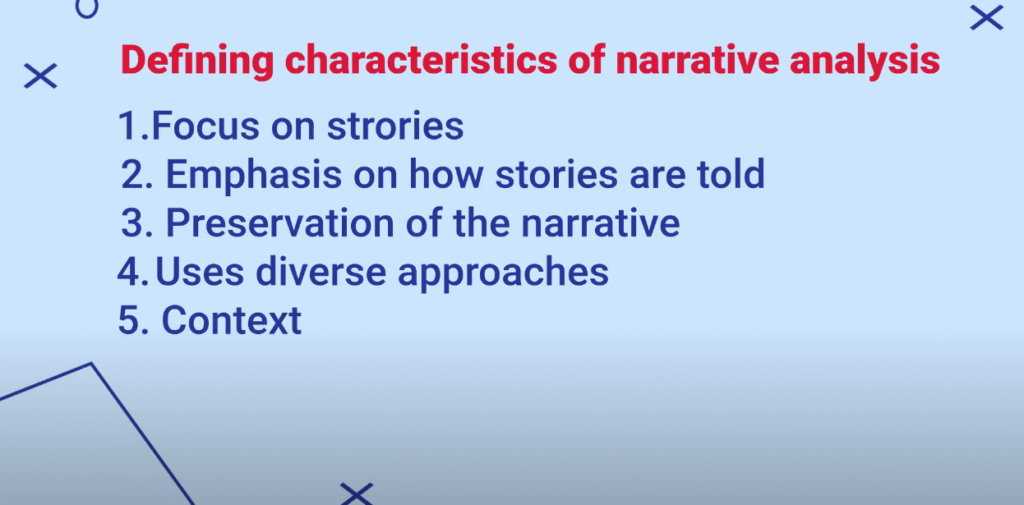
Narrative analysis takes into account the context in which stories are told.
It acknowledges the social, cultural, familial, linguistic, and institutional narratives that shape individual experiences.
6. Temporality
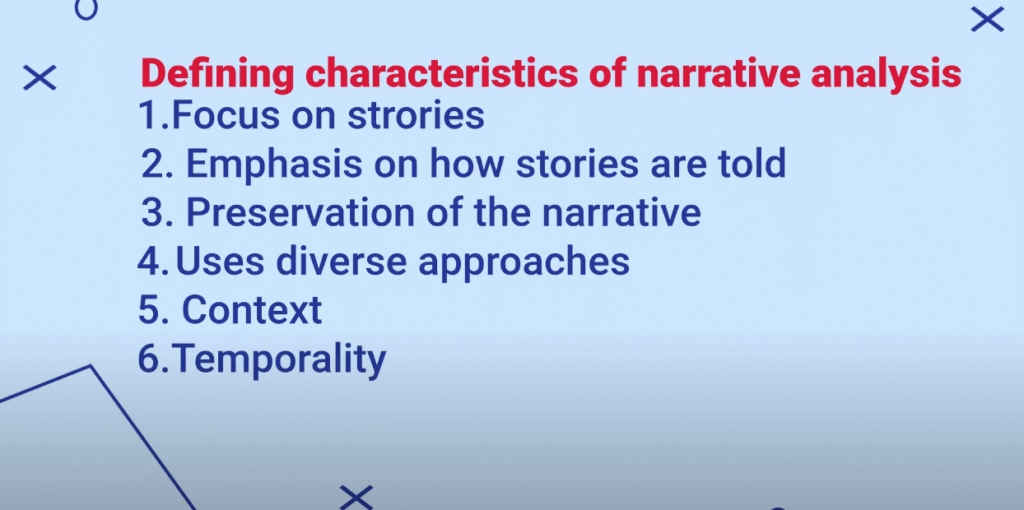
Narrative analysis considers the time of the experiences and how these experiences could influence the future.
So chronological connections and the sequencing of events are important.
7. Researcher’s role
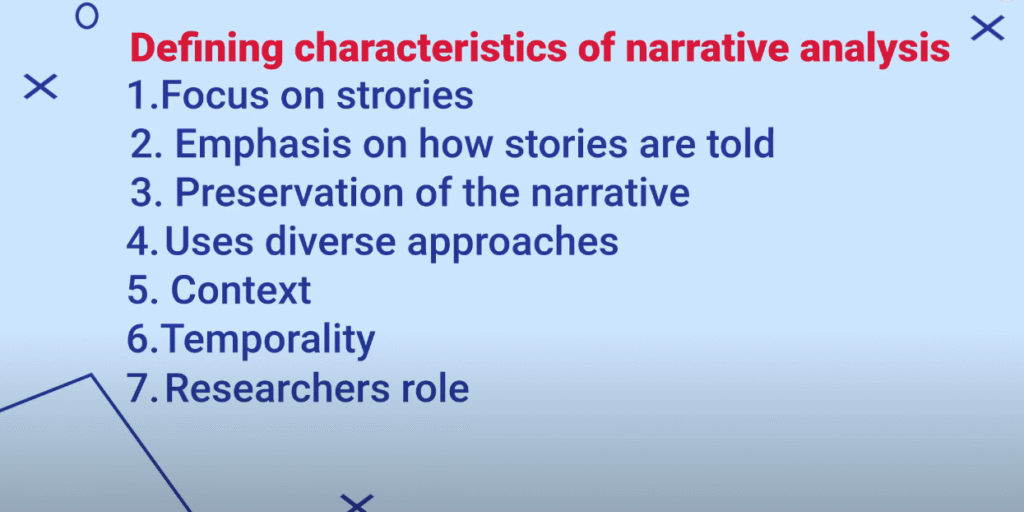
Researcher’s role in constructing the story through their concepts methods and interpretation.
The story is seen as coauthored by the researcher and the participants.
Below is a study utilizing narrative analysis.
https://drive.google.com/file/d/1q0zFpf-JMt8ebhPVMl988Y8lQT-6_IT6/view?usp=drive_link
Discourse analysis

What does discourse analysis involve?
Discourse analysis is a qualitative research approach that focuses on the investigation of language both written and oral as it is used.

So discourse analysis differs from textual analysis in that it assumes from the outset that language is invested
This means that language is not a neutral tool for transmitting a message
But rather constitutes a particular way of talking about and understanding the world.
In discourse analysis, language is viewed as the topic of research rather than the means to assess people’s views or attitudes.
Discourse analysts study the way texts are constructed.
The functions they serve in different contexts.
And the contradictions that run through them.
The defining characteristics of discourse analysis
So what are the defining characteristics of discourse analysis?
1. Focus on language use
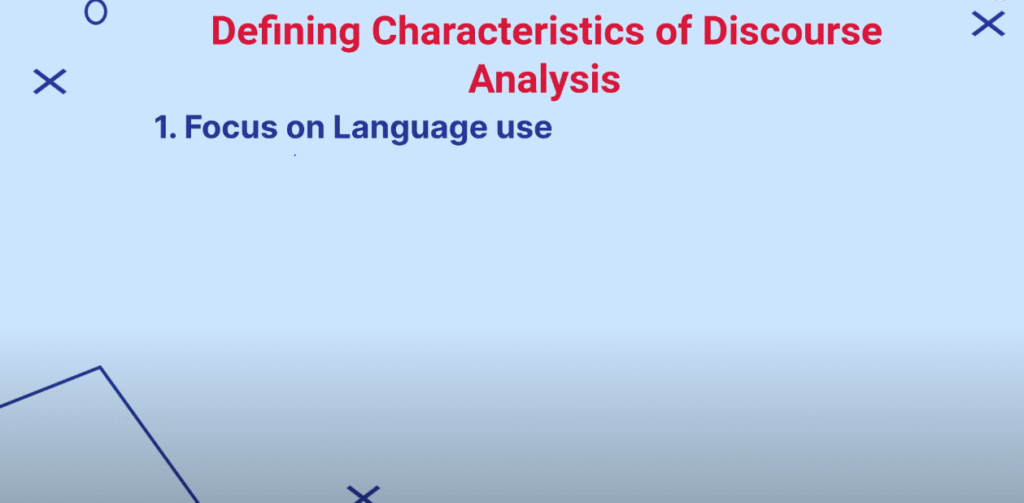
Discourse analysis is centrally concerned with language.
It examines how people use language to construct the accounts of their social world.
This includes looking at the patterns in language use such as the use of personal pronouns and the amount of verbal space a speaker occupies in a conversation.
Discourse analysis moves beyond a simple psycho linguistic or sociolinguistic understanding of the language.
2. Social construction of meaning
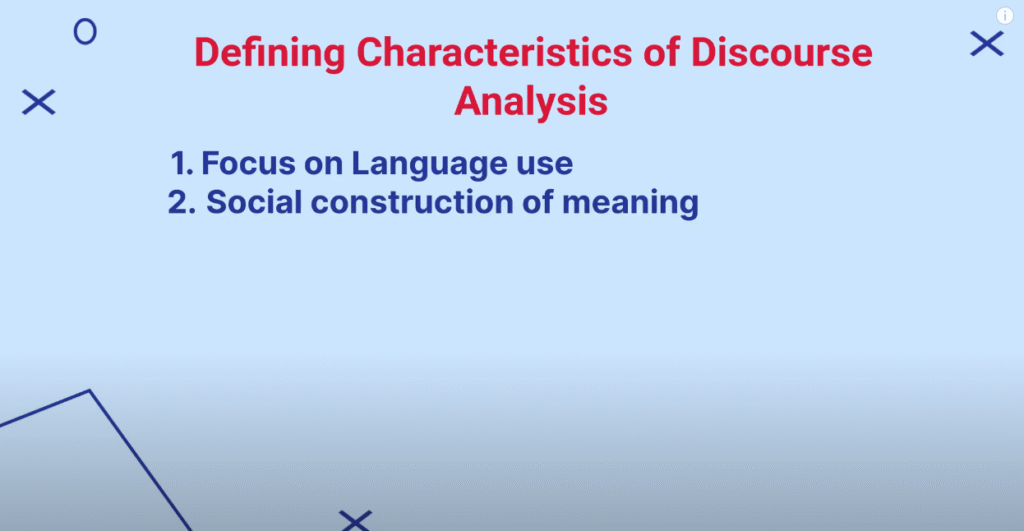
Discourse analysis explores how discourses construct or constitute social reality and social relations by creating meanings.
The focus is not merely on what is said or which words are used
But on the social construction and comprehensions of meanings created through discourse.
3. Discourse as social practice
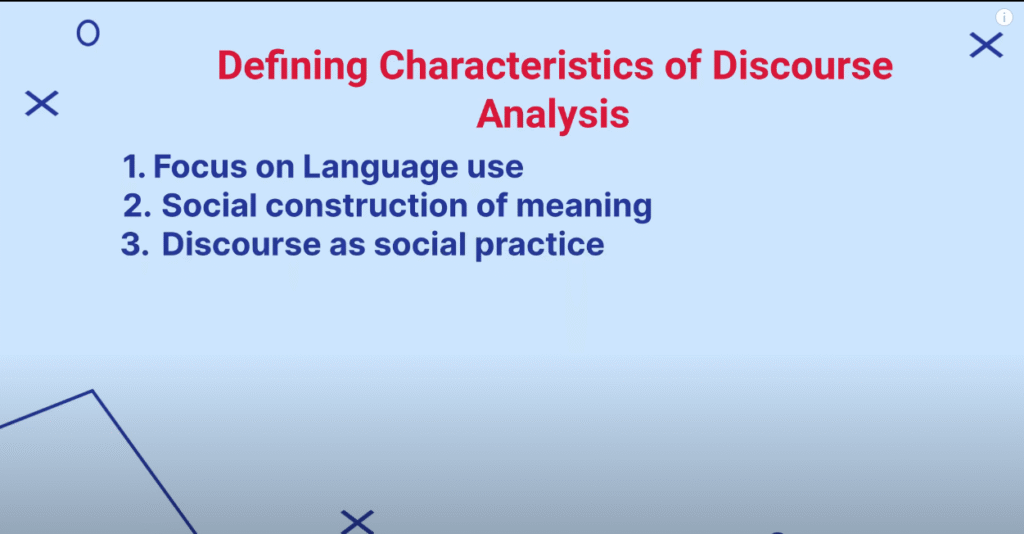
Discourse analysis views language use as a form of social practice.
Explores the links between language use and sociocultural practices.
Discourse analysis is concerned with the social production and effects of discourses.
4. It’s beyond textual analysis
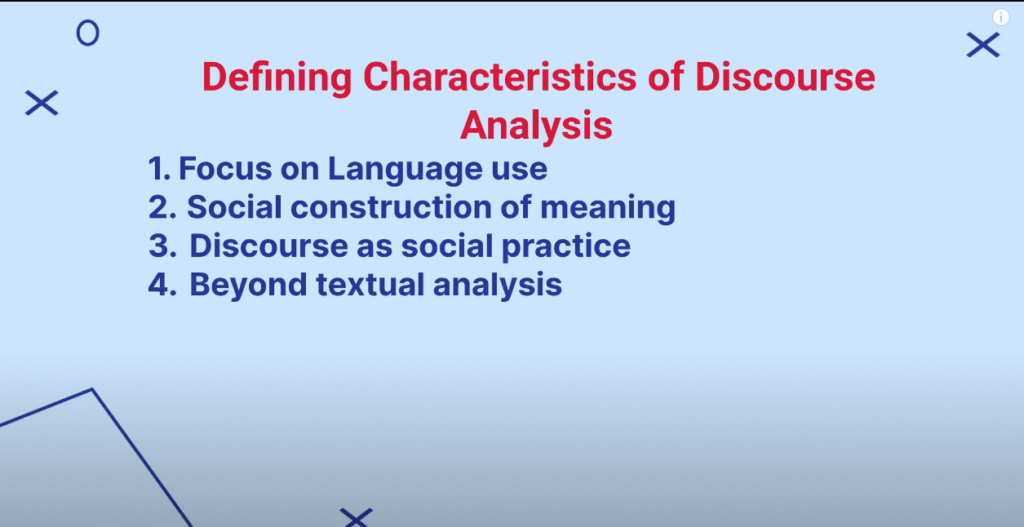
Discourse analysis assumes that all communicative events constitute a way of talking about and understanding the world.
5. Power dynamics
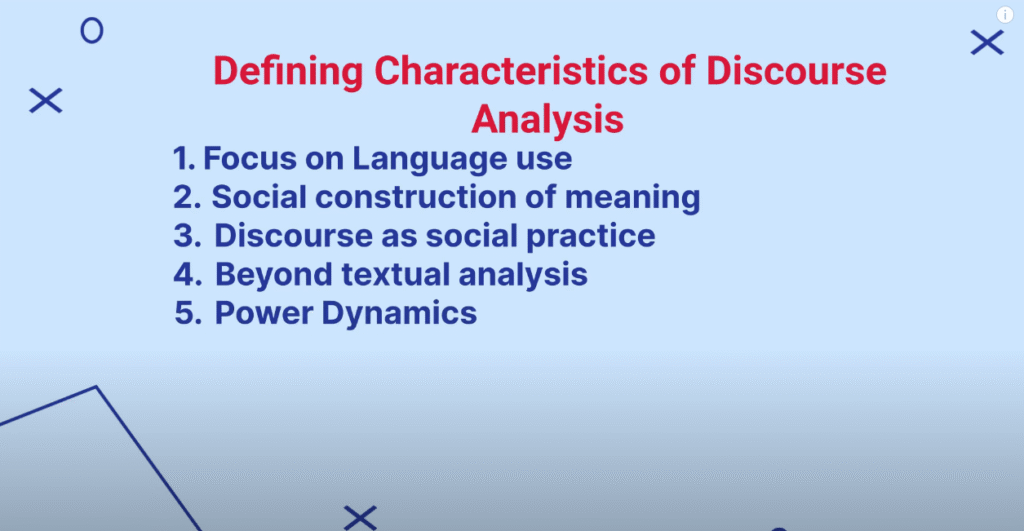
Discourse analysis pays attention to the more socially constituted forms of discursive power.
It examines the social construction of difference and authority.
It considers how language is used to shape meanings and give rise to social practices and relations.
Critical discourse analysis examines the exercise of power by those who control resources.
6. Contextual analysis
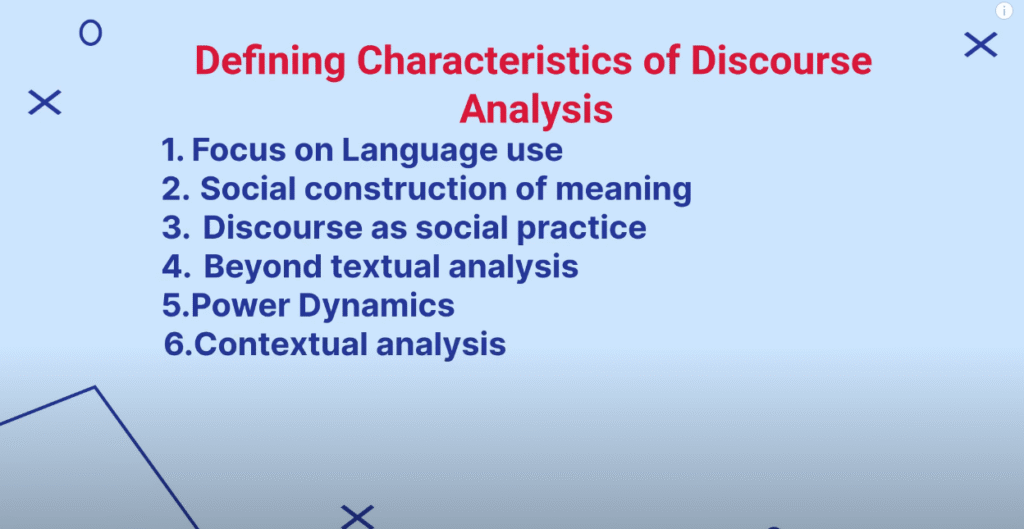
Discourse analysis considers the context in which language is used.
It recognizes the importance of cultural specific ways of speaking and writing and how thoughts are organized.
Discourse analysis examines the social context of what is said.
7. Persuasion
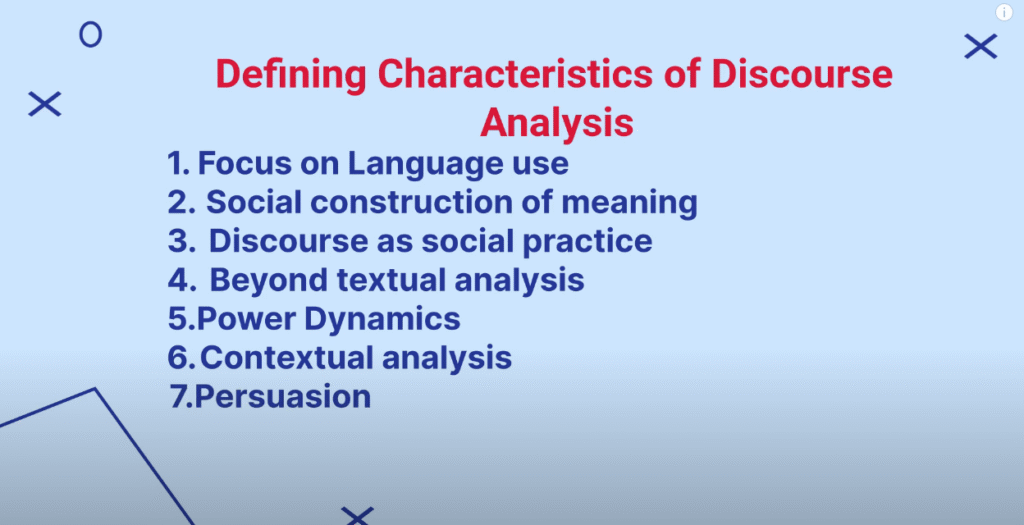
Discourse analysis focuses on the strategies of persuasion used in discourse.
It considers how discourse is organized to make itself persuasive.
8. It’s an iterative process
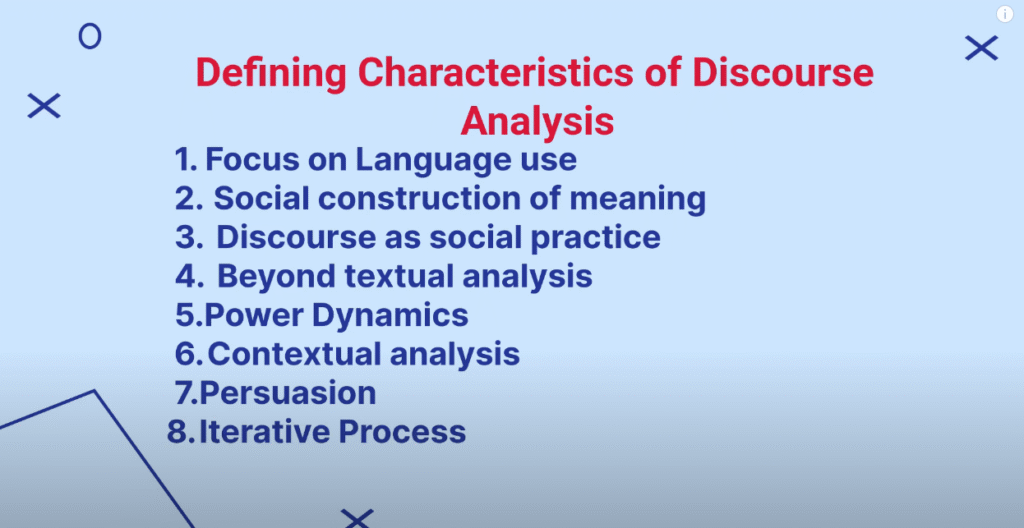
So discourse analysis involves immersion in the sources and becoming so familiar with them that their assumptions and themes become obvious.
The analysis may involve multiple readings and development of structured questions to ask of the data.
Discourse analysts iteratively consider past research and emergent codes.
Below is a study utilizing discourse analysis
https://drive.google.com/file/d/171DYg6j9D8ozZZti2ynYmYfaeiUWDGqk/view?usp=drive_link
Thematic analysis
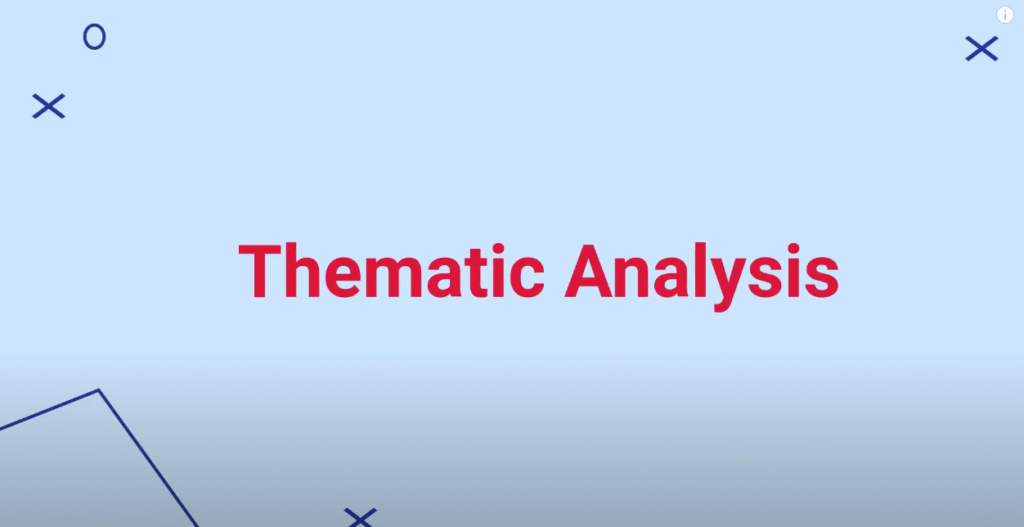
What does thematic analysis involve?
Thematic analysis is a flexible and widely used qualitative data analysis approach that focuses in identifying, analyzing and interpreting patterns of meanings or themes within qualitative data.
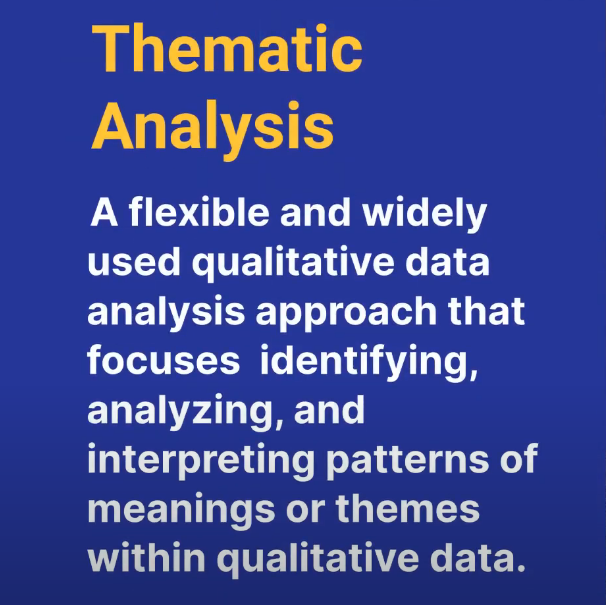
It’s considered a foundational method for qualitative analysis.
Thematic analysis can be used irrespective of the philosophical position of the research and it can be used with both deductive and inductive approaches to research.
In deductive approach to thematic analysis we have preconceived themes that we seek to find in given dataset.
In an inductive approach to thematic analysis themes are derived from the data itself.
This involves a ground up approach that begins with segmenting the data into codes and then looking for a pattern of shared meaning across the codes to form themes.
The main essence of themes is then reported in the findings.
In my previous article I went deep into the differences between inductive and inductive approaches to thematic analysis.
Defining characteristics of thematic analysis
Now what are the defining characteristics of thematic analysis?
1. Identifying themes
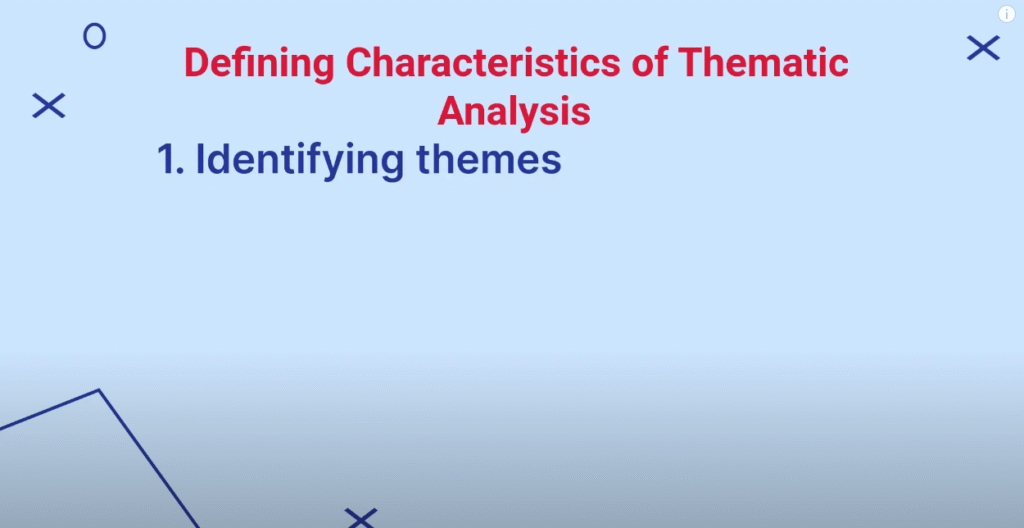
The central goal of thematic analysis is the search for recurring themes or patterns within a dataset.
Themes are broad units of information that consist of several codes aggregated to form a common idea.
This can be identified by coding qualitative data where codes are labels or short phrases applied to segments of the data that seem important.
So themes can be derived from the data itself inductive or from preexisting theory deductive.
2. Flexibility
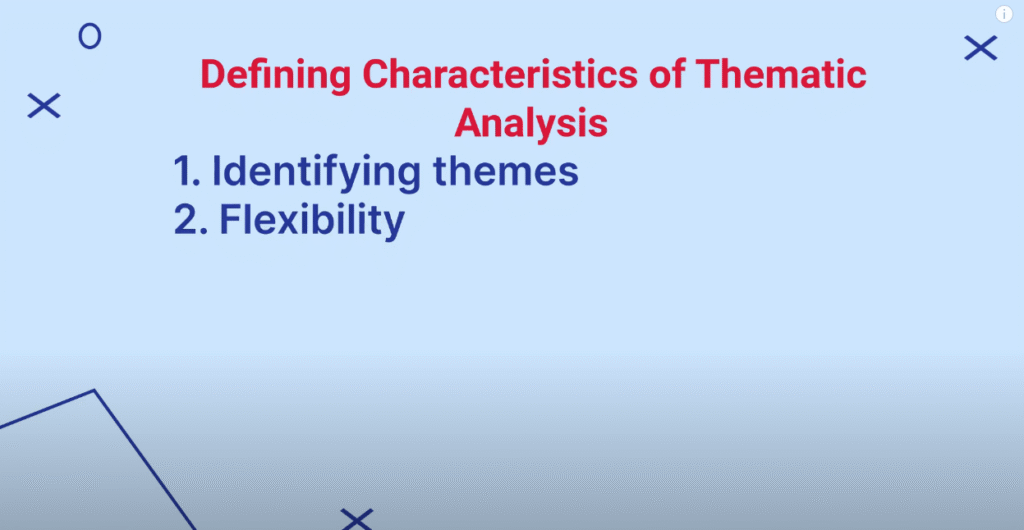
Thematic analysis is a flexible approach that can be adapted to different research questions and data types.
Thematic analysis is not tied to a particular philosophical or theoretical position and can be used in realist and interpretivist studies.
3. It’s a systematic approach
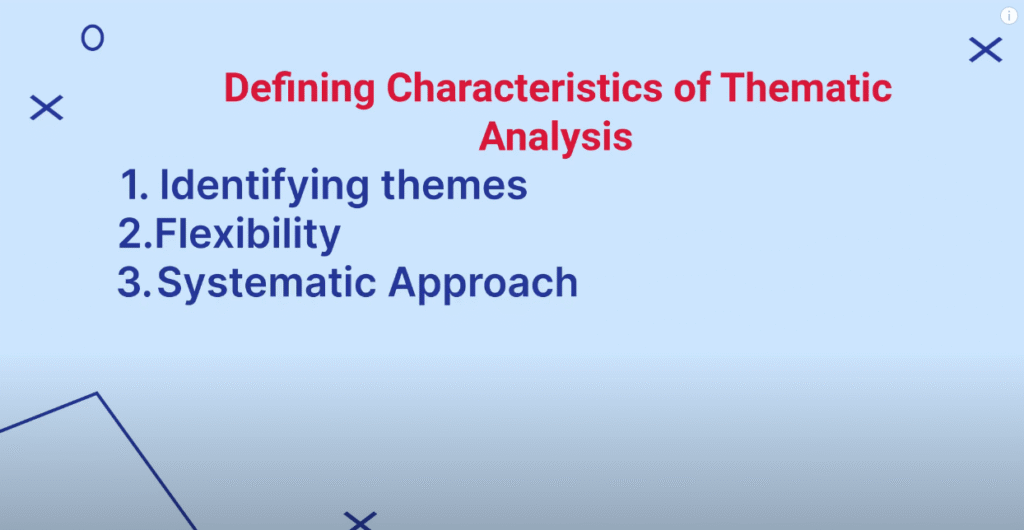
Thematic analysis offers a systematic yet flexible way to analyze data.
It provides an orderly and logical way to analyze qualitative data.
4. Data immersion
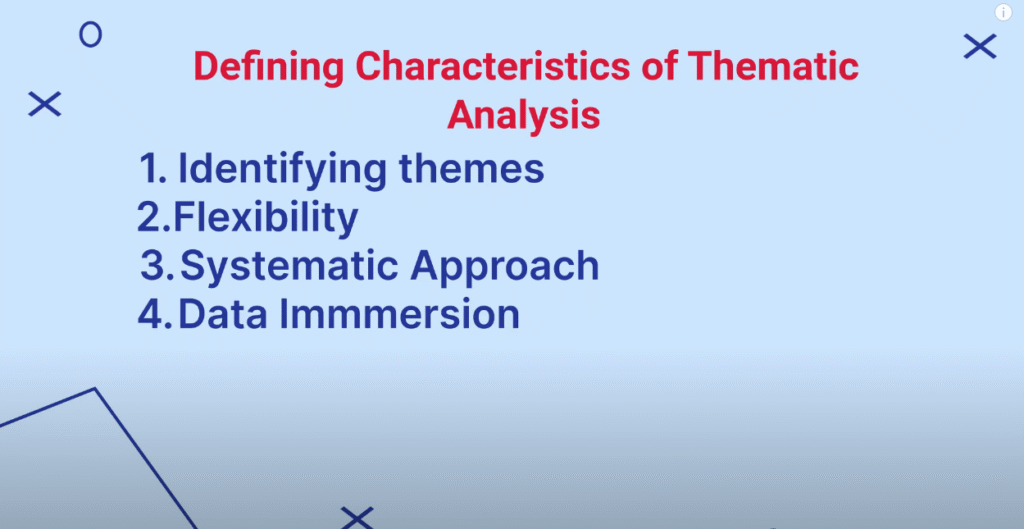
The process of thematic analysis usually begins with researchers immersing themselves in the data by reading and rereading their transcripts or other textual materials
This helps analysts to become familiar with the content and identify potential patterns and codes.
5. Coding
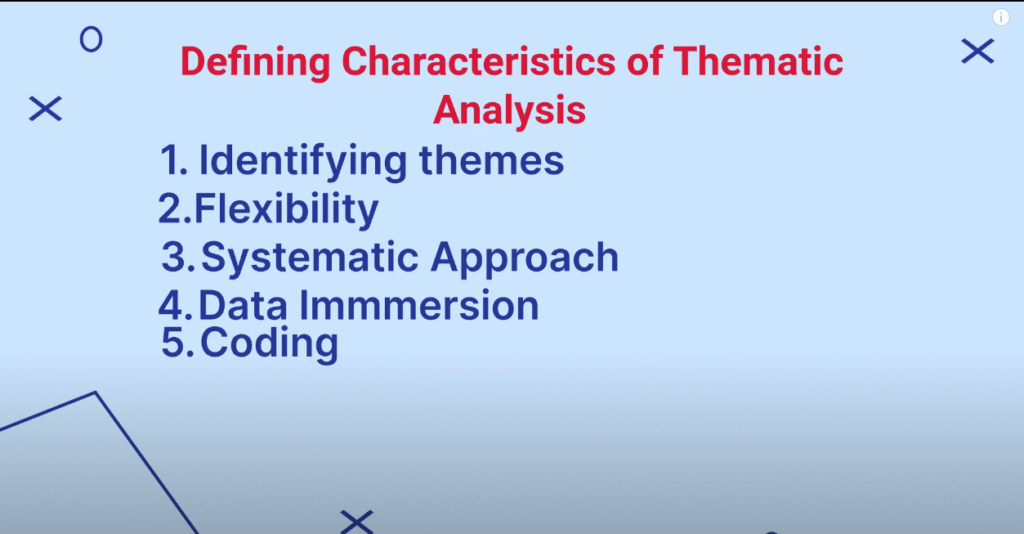
After immersion, the researcher systematically codes the data.
This involves identifying interesting features of the data and assigning labels or codes to them.
Coding helps in organizing the data into manageable units.
6. Theme development
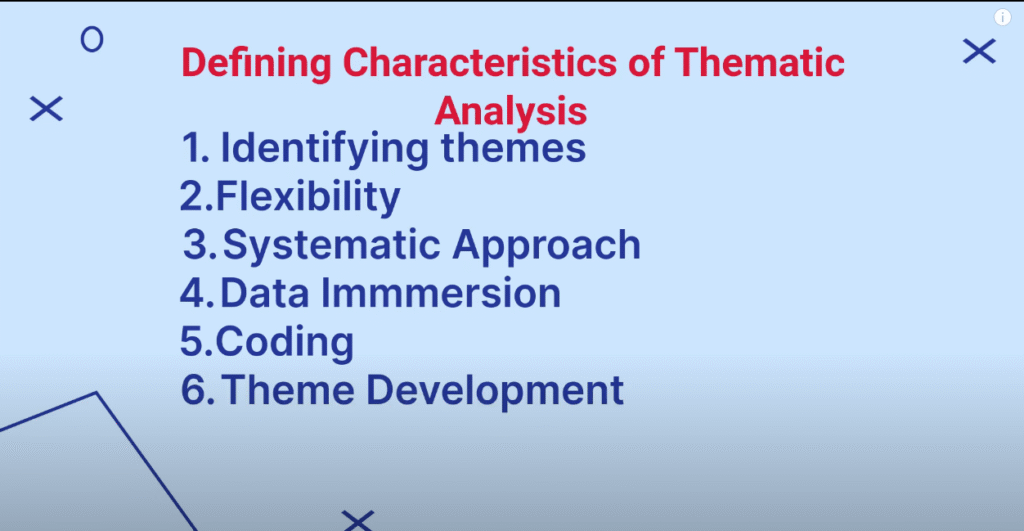
Codes are then examined to identify broader themes.
Themes represent recurring patterns or concepts that are relevant to the research questions.
This can involve grouping codes together and identifying relationships between codes.
Themes may have sub themes which relate to the main theme.
7. Interpretation
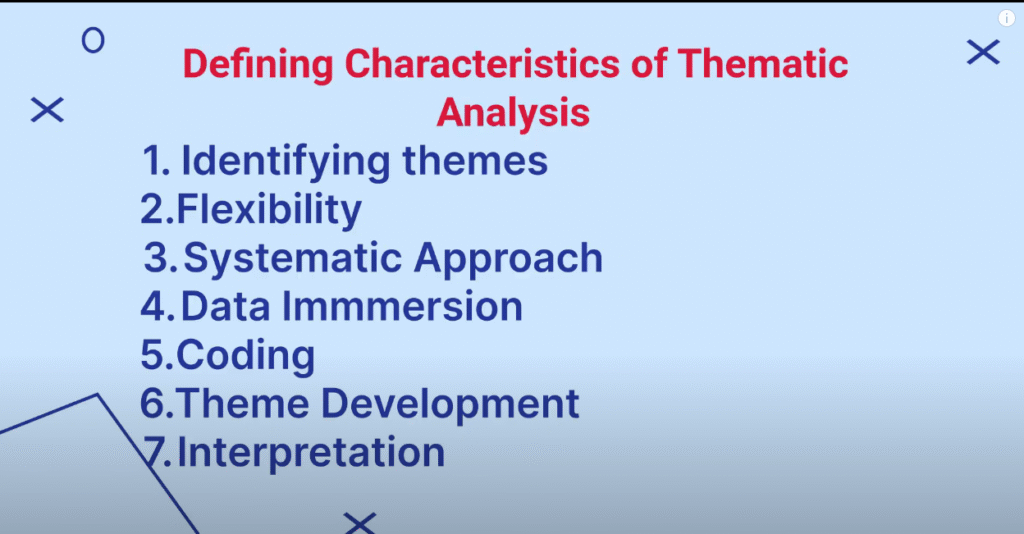
After themes are identified, the researcher then interprets their meaning in relation to the research question,
And they may connect findings to the existing literature.
The interpretation may also involve describing the essence of each theme and how themes relate to each other.
8. Presentation
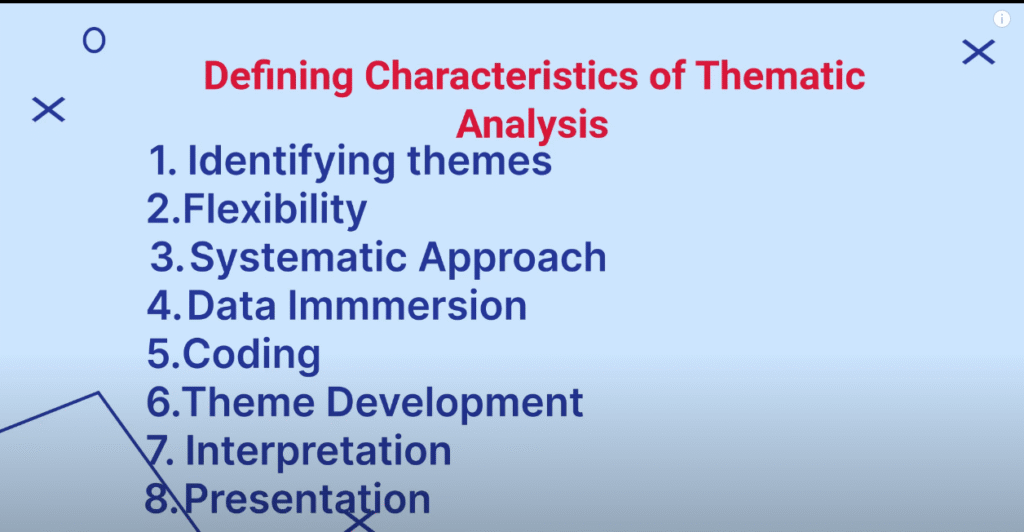
Findings of thematic analysis are usually presented in a narrative format with rich descriptions and supporting evidence from the data.
These may be presented in a hierarchical or network structure to show the relationships between them.
Below is an example of a study utilizing thematic analysis.
https://drive.google.com/file/d/1Nc-SrpyFrJJ4R9TAlvLhNmAAfllK25mL/view?usp=drive_link
Grounded theory
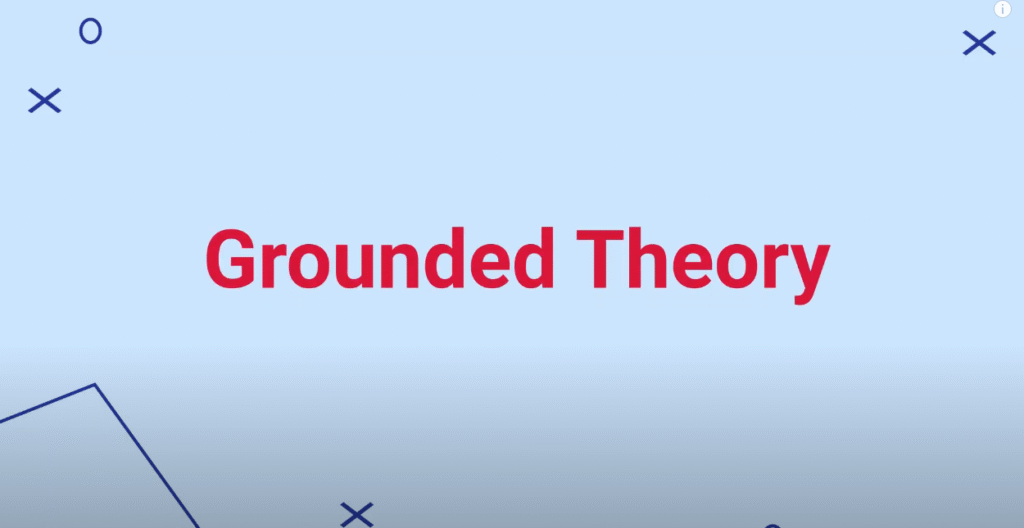
What does grounded theory involve?
Grounded theory data analysis is a systematic inductive approach that aims to develop a theory from data.
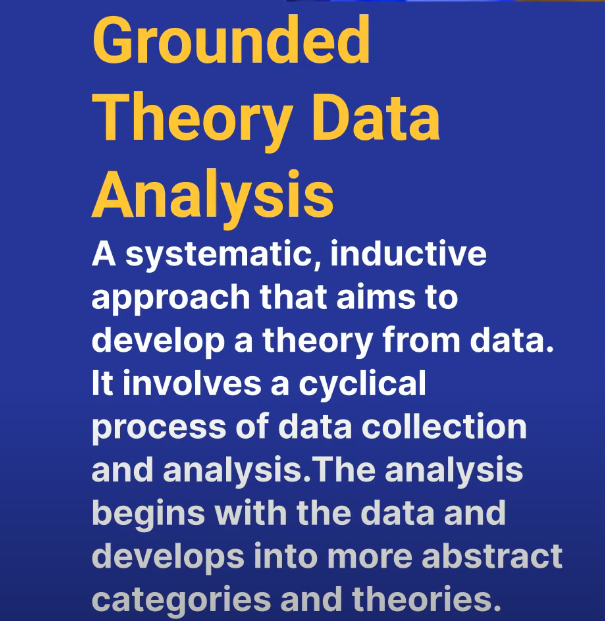
It involves a cyclical process of data collection and analysis.
The analysis begins with the data and develops into more abstract categories and theories.
It’s an iterative process where researchers move back and forth between data collection and analysis.
Defining characteristics of grounded theory analysis
So what are the defining characteristics of grounded theory analysis?
1. Constant comparative method
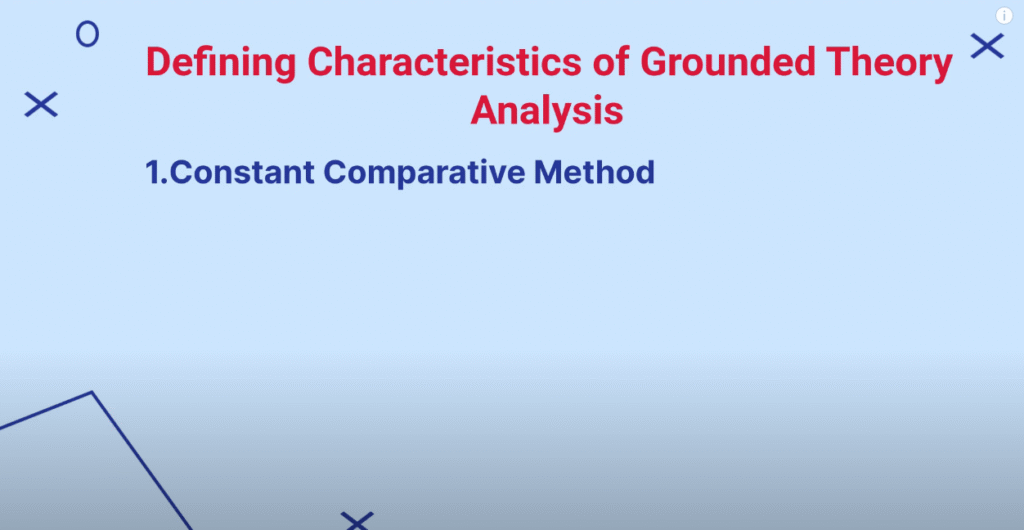
This is a core strategy where data segments are compared to identify similarities and differences and grouped into tentative categories.
These comparisons are constantly made within and between levels of conceptualization until a theory is formulated.
2. Coding
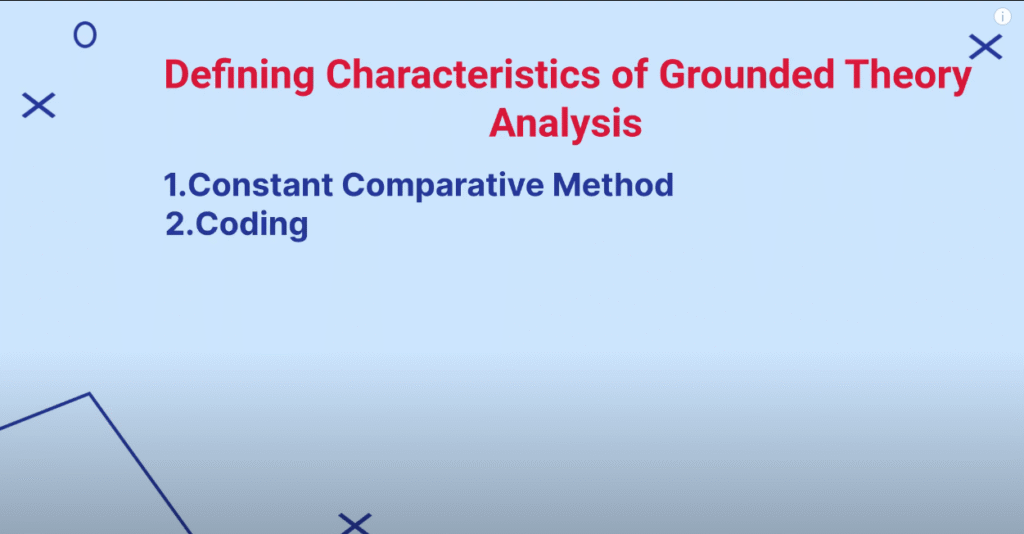
Data analysis in grounded theory uses a process of coding to develop a theory.
This includes open coding, which is the initial stage of coding, where data is broken down into conceptual units and labeled with codes,
Which involves line by line analysis and asking questions like:
What is this data a study of?
And what category does this incident indicate?
3. Theoretical sampling
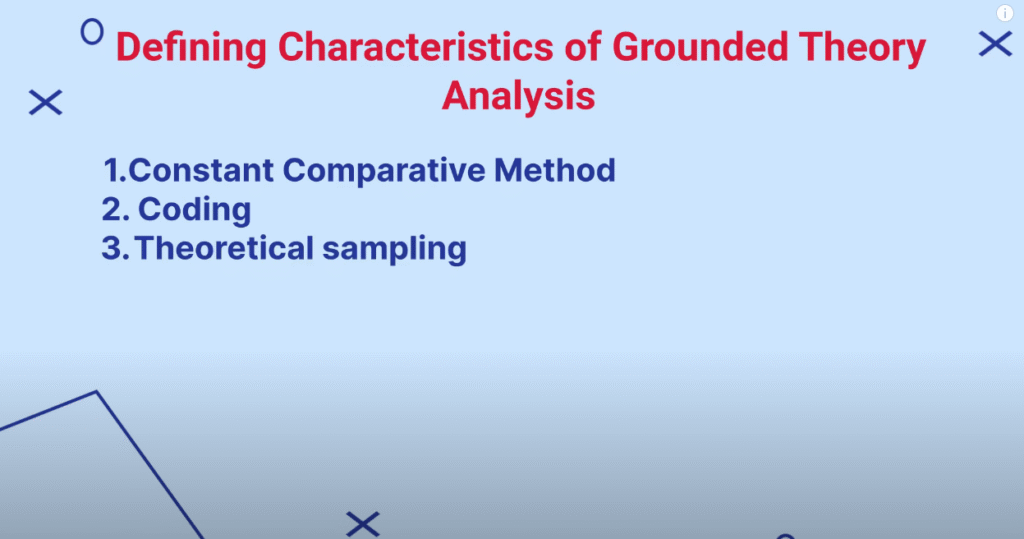
Data collection is guided by the emerging theory with the researcher strategically selecting new participants or data sources to fill gaps and develop weak spots in their theories.
Sampling will continue until theoretical saturation is reached meaning no new information is emerging from the data.
4. Memos
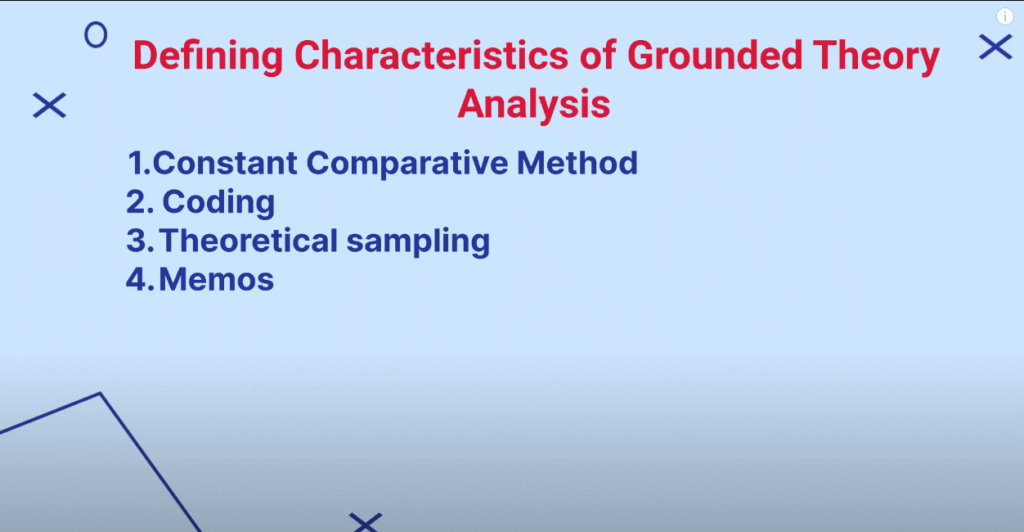
Through the research process, researchers write memos to record their ideas, insights and evolving understanding of the data.
This memo writing aids in the development of grounded theory.
5. Theory generation
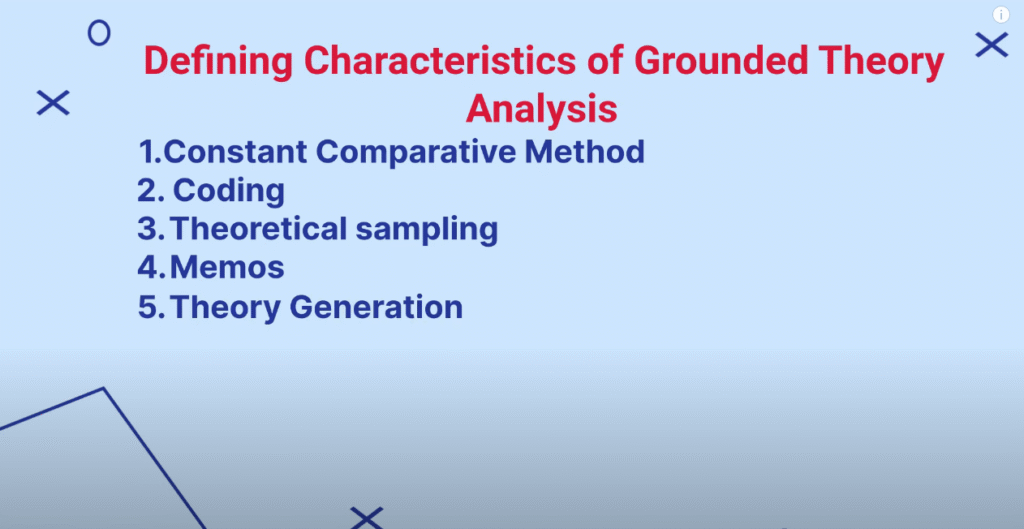
So the ultimate goal of grounded theory analysis is to generate a theory that is grounded in the data,
This means the theory emerges from and is supported by the data.
This theory might be presented as a visual model, a set of hypotheses or as a discussion.
The theory should explain a process action or interaction related to the research topic.
Kindly find an example of a study utilizing grounded theory analysis linked below.
https://drive.google.com/file/d/1e8m50QJBTPIcbX3d3sNqcLYTy835WiwE/view?usp=drive_link
Interpretive Phenomenological Analysis, IPA
What does IPA involve?
Interpretive phenomenological analysis is a qualitative research approach that delves into how individuals make sense of their lived experiences, emphasizing the unique perspective of each participant within their specific context.
IPA is characterized by a double hermeneutic where the researcher interprets not only the participant’s experience but also the participant’s interpretation of that experience.
Defining characteristics of Interpretive Phenomenological Analysis, IPA
So what are the defining characteristics of Interpretive Phenomenological Analysis, IPA?
1. It focuses on lived experiences
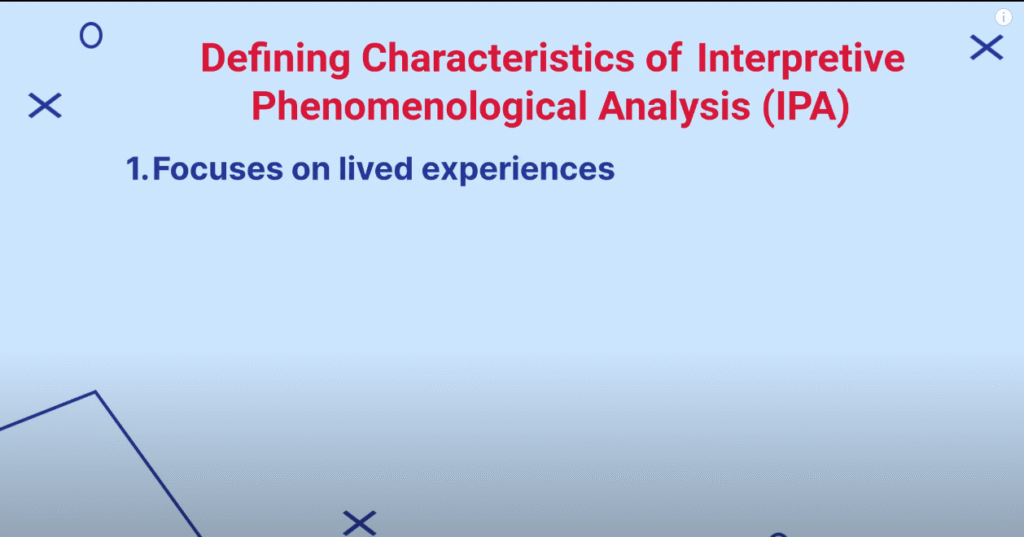
IPA aims to deeply understand how individuals experience and make sense of significant life events.
So IPA seeks to uncover the meanings that experiences hold for individuals, acknowledging that these meanings guide actions and interactions.
2. It’s double hermeneutic

IPA involves two levels of interpretation.
The researcher interprets the participant’s understanding of their experience,
Acknowledging that there is no subjective reality outside of its interpretation.
The goal is not to find an objective truth but to grasp how participants make sense of their own experiences.
3. It’s an ideographic approach
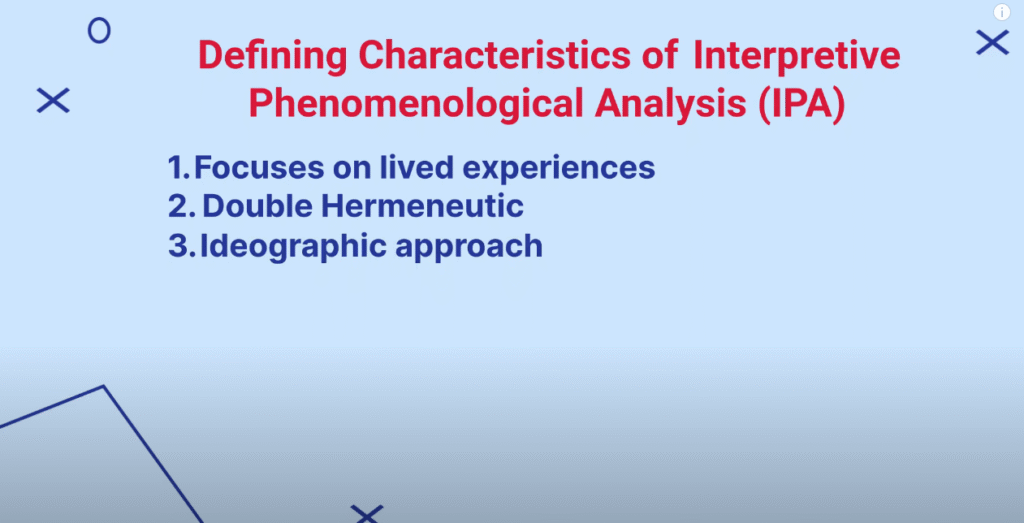
IPA focuses on the particular valuing the unique experiences of each individual
Rather than aiming for generalizable findings.
In this regard, IPA seeks to understand the lived experiences of a participant on their own terms respecting the complexity of the individual’s interpretation of that experience.
4. Data collection
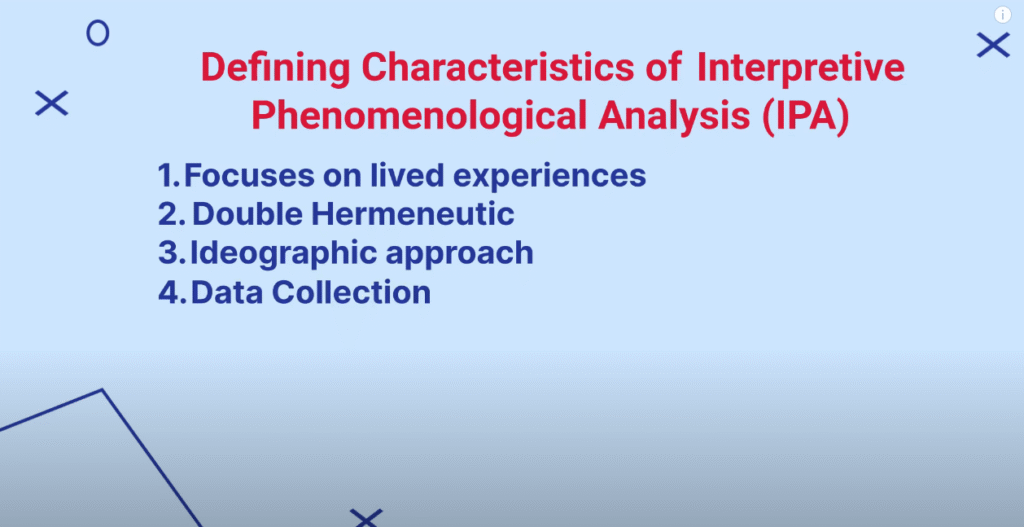
Semi structured interviews are the primary method of data collection in IPA.
These interviews use open ended questions to explore the participant’s feelings, perceptions, and understandings of the phenomenon being studied.
The interview is not a neutral tool for collecting data, but rather a part of the interpretive process.
5. Reflexivity
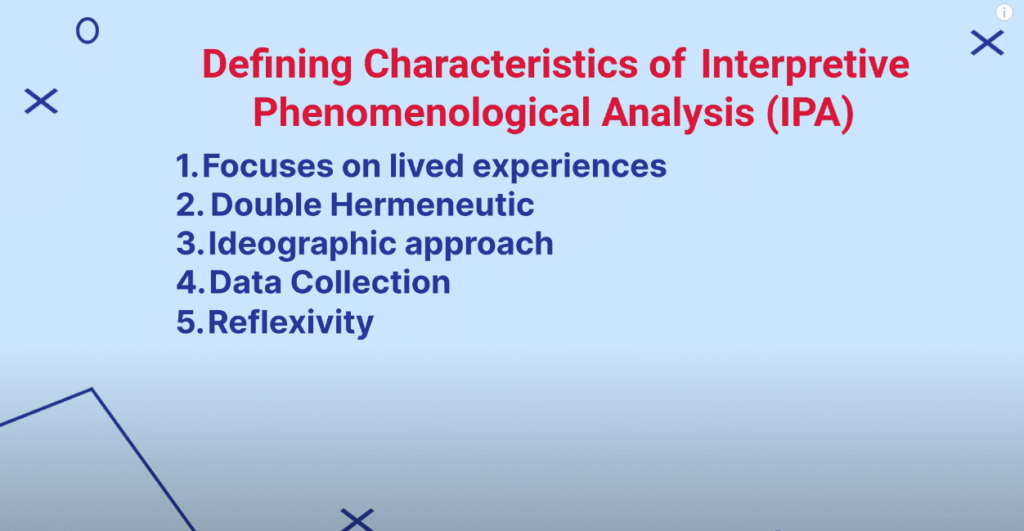
In IPA researchers reflect on their own experiences and biases related to the phenomenon to ensure their own viewpoints do not unduly influence their analysis.
The process of bracketing or setting aside personal viewpoints helps the researcher to focus on the experiences of the participants.
Kindly find an example of a study utilizing interpretive phenomenological analysis linked below.
https://drive.google.com/file/d/1GTwPMqbYCkE88K5nPP8kSRTiebCox27p/view?usp=drive_link
How do you choose a qualitative data analysis approach to use in your study?
It’s important to decide which qualitative data analysis approach to use in your study based on your research questions and objectives.
It’s also advisable to use an uncomplicated approach if you are a beginner.
One of the easiest approaches to learn as a beginner is thematic analysis.
After you master thematic analysis, you can then venture into using other approaches of analyzing qualitative data as you grow as a researcher.
Kindly check my other articles on how to conduct thematic analysis using N-Vivo to get a deeper understanding of this approach.